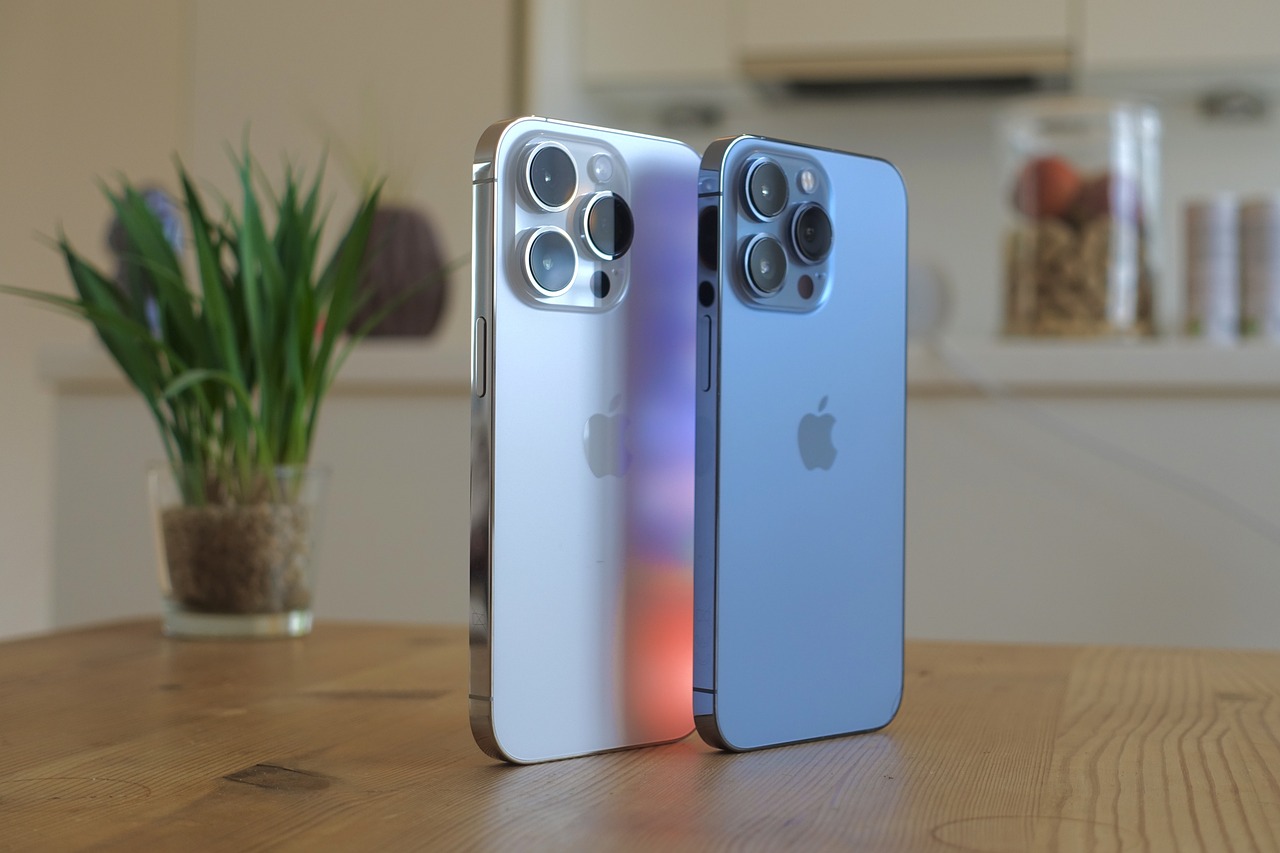- cross-posted to:
- [email protected]
- cross-posted to:
- [email protected]
The latest iOS 18 update strongly hints that Apple’s forthcoming iPhone 16 lineup might incorporate the highly anticipated solid-state buttons.
Unveiled at the recent WWDC, iOS 18 includes a much-discussed “hide and lock apps” feature that some worry could be misused for privacy concerns related to infidelity. Among its other noteworthy additions are many AI features and several notable improvements, including enhanced visual effects.
I want more buttons not less
I would like at least 26 more buttons
I want buttons with two sides, buttons with multiple steps, I want buttons on buttons! Give me buttons made of shirt buttons, one button, two buttons, red buttons, blue buttons. BUTTONS!
I was thinking more like buttons for A-Z, but that sounds good too.
Here is an alternative Piped link(s):
Piped is a privacy-respecting open-source alternative frontend to YouTube.
I’m open-source; check me out at GitHub.
The technology arguably exists for them to make solid states buttons that look and feel real. If they protrude, and have pressure sensitivity and haptics like the Magic TrackPad, then they’re going to fool the vast majority of people.
And by doing this, they could leverage some of extra features and configurations options that their other solid state buttons have had. Gestures, pressure sensitivity, increased accessibility customization, etc.
Right!!! I want my damn home button back
Sounds like they’re really pushing your buttons…
I like that I can currently adjust the volume or silence a call on my phone in my pocket by feeling the physical buttons. I miss being able to deliberately unlock my phone with touch id as I’m picking it up without having to look at it square on.
Hell, I even miss the chin and bezel. I liked having neutral space to grab the phone without it registering a tap or swipe.
Maybe I’m getting old, but smartphone design largely peaked several years ago, and they insist on making changes to parts of the phone that are perfectly fine.
I miss being able to bend over without my phone jabbing into me while in my pocket. However I think the desire for both smaller phones and more buttons is off trend unfortunately.
One of the biggest reasons I got a flip style foldable phone. The best of all worlds in my opinion.
Ugh annoying headline. “Buttonless” implies the buttons are disappearing, like the home button. The articles says they might be using “solid state buttons” which, I think, are a bit like the Macbook trackpads, there’s no real button but it still acts and responds just like a trackpad button.
The lock and volume buttons likely will still be there, just won’t physically move, and use haptic feedback instead.
The haptic feedback on the AirBudz Pro is amazing. I legit thought I was pressing real butan at first.
Yup, it’s the “Wireless” charging gimmick all over again
This is excellent. But I want some real innovation. Forget buttonless, I want screenless! I want no screen at all. I just want it to play random notes at different intervals to relay me information. Now that’s innovation.
Sounds like you want a humane AI pin!
That’s why R2D2 was the GOAT
You might look at “smart rings”.
Blind people use iPhone with the screen off. You can do it too.
People seem to hate on this for one reason or another, but I think it’s great if done well. It’s not actually “buttonless”, it will still have a frame with shapes for something looking like a button, it just won’t physically move when pressed. If they make it work as good as their trackpads (which are the best trackpads out there no contest imo) or similar to the solid state home button the iPhone 7, 8, SE2 and SE3 have, I’d say it’s better than actual physically moving buttons: the button will feel consistent between devices of the same model (you can get slightly different feeling physical buttons between the same iPhone model or also another manufacturer’s phone model because of tolerances), it could be configurable (sensitivity and feedback, like you were able to configure the home button starting with the iPhone 7), it makes the frame more rigid, solid state buttons basically never break, they could have different actions at different pressure levels (with feedback to match) etc.
My one concern is, what do I do if the phone freezes up?
With physical buttons there is a hardware bypass so I can force the phone to reset.
With a “trackpad” I’m not as confident it will register those touches correctly when the OS has seized up.
I’m assuming they’ll have something figured out at the hardware level, but I’m curious what that will be.Just take out the battery, oh wait.
I assume it wouldn’t be too different from how it works now. On phones without a home button, you press volume up, volume down and then hold down the side button. This forces a reset even if iOS completely froze/crashed. Now this same low-level interrupt (or whatever is actually happening, I’m not sure) works with solid state buttons instead. I don’t see the problem. It’s not like the current side button physically cuts the power if you hold it down for 5 seconds, there is some low-level firmware running that listens for that key combo and then resets the SoC.
Come on, I know many people in the Fediverse dislike Apple, but do you actually think they’d not think about that…? This would blow in the press up a few weeks after launch and Apple surely wouldn’t want that.
I feel like this might be one of those things where people are like “oh this is bad” but then >99.9% of the people actually using it are completely fine with it and all the issues people talked about beforehand like resetting when the OS froze will be non-issues because it’ll work just like it did before.
I think I was thrown off by the “trackpad” example that was given above. That would have been a bit more complex than just a simple button press (which is still doable in low level firmware) but I was curious how they would pull it off.
I looked up what “solid state buttons” are and it makes a lot more sense now. This isn’t like some trackpad you can swipe along the endge, they’re still buttons in separate locations, just not in the mechanical clicking sense that we’re used to.
I just like the sensory feedback of feeling buttons clicking downwards. I’ve used solid state buttons before and while they’re far better than pure touch control “buttons,” they still don’t feel like real buttons to me. Haptics help the illusion, for sure, but it can’t match the analog feeling perfectly.
And like the other comment said, how do they get around frozen software and being able to use the buttons to force power cycle a device? Unless the buttons have a completely separate controller outside of the OS?
Apple’s solid state trackpads are downright eerie. It feels so damn weird when they’re turned off. It feels like they should physically move, but they don’t.
Yes, if infidelity occurs, it will be the phone makers to blame!
that got me. Well maybe we should just outlaw smartphones because they might be used for infidelity. Why is it a concern at all for a privacy feature which by nature all of them would help hide fidelity. Heck the tracker thing was way more disturbing given it was like the opposite.
Or we could just medically castrate people like back in the 40s. Because you know what functioning sex hormones leads to. INFIDELITY.
/s
Fr it’s so stupid. Why would you be in a relationship if all you feel is distrust.
No buttons is a really dumb idea, phones have recovery modes binded to physical buttons for a reason. But then again, why would a typical iPhone user try to recover his phone on his own or even yet know that that exists altogether.
“physical buttons” are digital anyway, and solid state buttons don’t necessarily mean software controlled buttons.
I mean, this is about replacing “buttons” with “solid state buttons”. There’s no indication that a solid state button has a higher failure rate than normal buttons, and you already have cases where normal buttons break and the phone cannot be recovered.
This is like complaining that they moved to OLED because LED screens are used to convey information… it’s essentially doing the exact same thing.
That’s not exactly the concern: solid state buttons should be more reliable. The concern is that if something happens, like a bug or failed update, where the only hope of recovery is to reset it, you’re depending on buttons controlled by the same software that’s already broken.
In theory, mechanical buttons continue to work, regardless of the OS or drivers being locked up, so you can still recover
You’re assuming solid state buttons are completely reliant on software to run, but there’s no reason that has to be the case. Sure, for advanced stuff like “is a finger swiping across this” I agree you need software, but I doubt it’s impossible to use as binary input. “Is a finger touching this” isn’t hard when you have a little piece of hardware in there that sends out a signal when it’s being touched.
I read elsewhere that they had implementarion issues, anyway they are really hard to handle because of their feedback mechanism thus easy to accidentally press. It seems that the only benefit are looks and durability at the cost of repairability, ease of use and cost.
deleted by creator
If they have some situations where LLM/Siri runs on device that would certainly do it!
deleted by creator
Check your battery health in settings.
iPhone 11 is approaching five years old, and Li-Ion batteries don’t have an endless lifespan. Especially if you let it get below 20% frequently. I wouldn’t be shocked if your maximum battery capacity is pretty low, and that’s just normal wear and tear.
You could probably replace the battery at an Apple Store or certified repair shop, which would essentially make it behave like a new iPhone 11.
There were some battery drain issues in iOS17 related to specific apps, IIRC, which have since been resolved.
The thing Apple got sued for was sort of the opposite of increasing battery drain: slowing the performance of the phone to prevent it from shutting off while still having battery capacity. Phone battery draw isn’t smooth, it’s spiky, and they were dealing with a defective battery design that didn’t have a properly predictable voltage curve. So occasionally the CPU would require a voltage the battery couldn’t provide and the phone would turn off, even though the battery had plenty of juice. To prevent these shutoffs, they underclocked devices with older batteries.
The problem is they didn’t really tell anyone what they were doing, at least not publicly enough.
deleted by creator
Woof, yeah, something’s wrong if you’re only getting four hours from that battery. Is your phone constantly hot? Might be worth a visit to the “Genius” (🙄) bar.
deleted by creator
Not to state the obvious, but even if they did go in that direction, you’re not typically sitting there holding an hours long conversation with Siri. The battery life would be drained in proportion to how often you used it, just like phone calls, movies, and heavy games do now.
Well the HTC U12+ had this exact future in 2018 and it sucked hard. The buttons wouldn’t register 100% of the time and the tactile feedback left a lot to be desired.
This is just more change for the sake of change because they really have no other actual objective improvement to make to the device.
I understand they claimed they needed room for internal components when they removed things like the button and headphone jack, but after having partially disassembled my own phone for DIY battery replacement the power and volume buttons are so minimal in volume that there can’t be any measurable gain for the consumer by removing them. The only potential gain is a reduction in manufacturing complexity and a cost savings for Apple. Personally I think this was the case for both jack and button as well. It wasn’t about internal space as much as it was eliminating components to save costs.
Personally, I miss the tactile button that confirmed a press and executed a function when that button was pressed rather than swiping up and hoping it catches the gesture right to switch apps or close them. Especially to get rid of the phone search window. Anyway, I don’t mean to be the guy that gripes about change, but IMO these changes are about profits and not the user, they remove valid and useful functionality.
I think replacing the physical home button with a haptic button on the iPhone 7 also helped them improve their IP rating (i.e., water resistance). I could be misremembering that, though, and I have no idea if it’s relevant in this case.
That was fine. IMO that worked pretty well.
The costs on such components is pennies, and Apple honestly isn’t shy about just charging more to cover their costs.
I do honestly believe they made those decisions to cut down on total space. The headphone jack alone is gigantic, and the home button required an entire bar of potential screen real estate dedicated to it.
Were there other options? Sure. They could have had the home button under the screen or something, but honestly their decision was likely the best choice. Which is only furthered by the fact that virtually everyone is doing the same thing now.
That said, moving from physical buttons to solid state buttons with haptic feedback… I don’t see how that could cost less. Honestly if it cost less, others would likely already be taking that shortcut.
I’d wager it costs a little more per phone, and they will charge an extra $100 for that “premium” feature. Simply because they can.
are we ready for buttonless, we couldn’t do holeless.
deleted by creator












